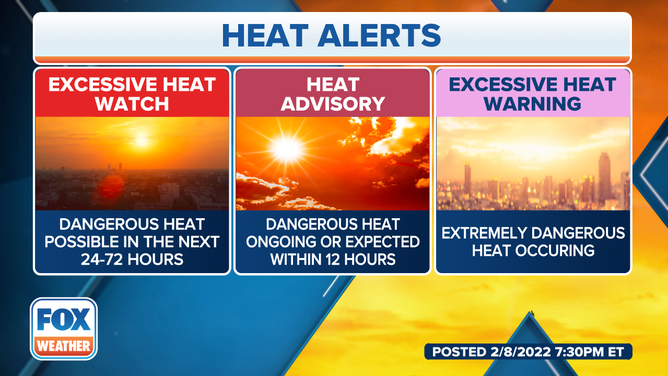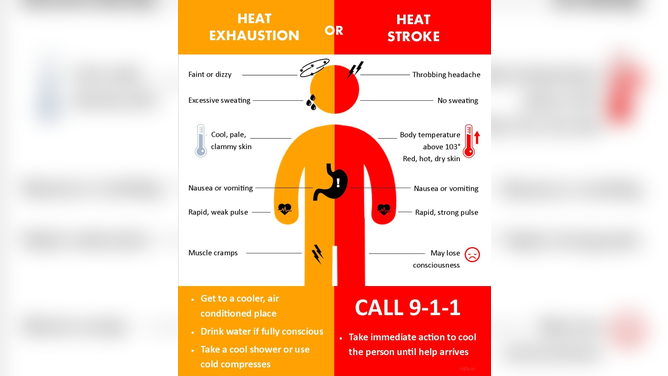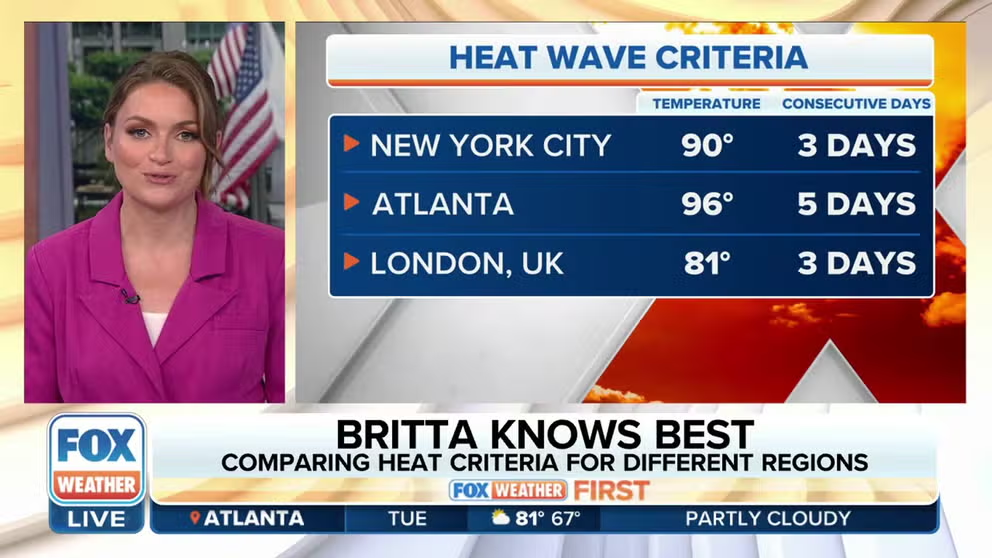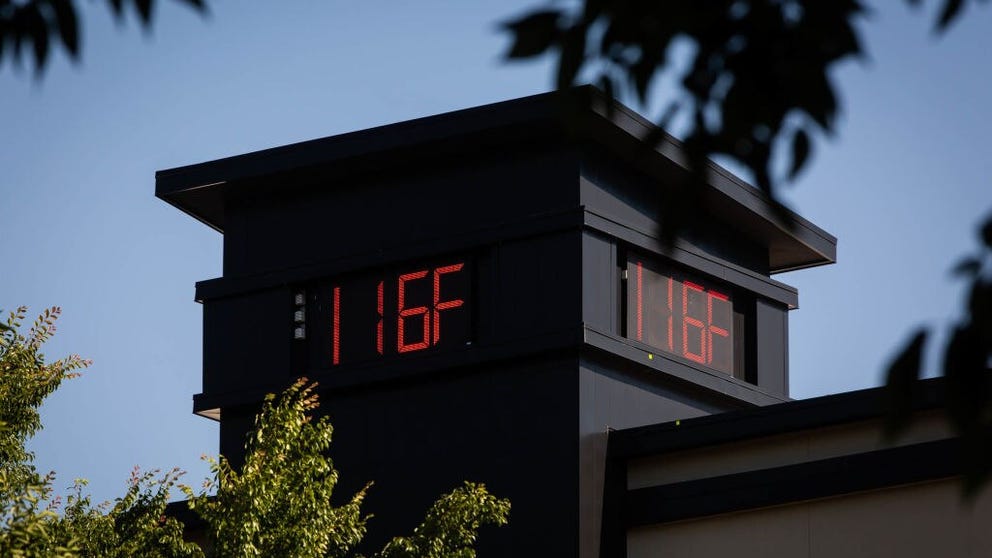7 facts about heat waves
Heat waves form when air becomes trapped, and impacted areas can bake similar to an oven. The unusually warm temperatures last at least two days and in extreme cases can last several weeks. Exhaustion can lead to illnesses if precautions are not taken.
Categorizing heat waves based on human health impact
Adrienne Arsht-Rockefeller Foundation Resilience Center partnered with Seville, Spain to help them become the first city to name heat waves.
One of the most unpleasant feelings is sitting out in the blazing heat when temperatures reach the triple digits. If the heat lasts several days, you’re likely experiencing a heat wave. Luckily, they don’t often happen, but when they do, they can send people running indoors for a cold drink in the cool AC.
Here are seven things you should know about heat waves:
1) Standard definition doesn’t exist
Don’t be surprised if you get varying answers from meteorologists on the definition of a heat wave. A standard definition doesn’t exist among the world’s weather organizations. The National Weather Service lists a heat wave as a period of abnormally hot weather that lasts more than two days. In contrast, the World Meteorological Organization defines a heat wave as five or more consecutive days with a high temperature of at least 9 °F above average.
Comparing heat wave criteria for different regions
The criteria for a heat wave varies by region. FOX Weather meteorologist Britta Merwin explains why there are regional differences.
2) Common watches, warnings and advisories
It's common during a summer heat wave you'll find yourself in an advisory issued by the National Weather Service. These include Heat Advisories, Excessive Heat Watches and Excessive Heat Warnings.
- Heat Advisory: Usually issued within 12 hours of the start of the heat. Criteria vary around the country but is generally issued when the heat index is expected to be around 100° degrees for multiple days and nighttime temperatures stay above 74° degrees.
- Excessive Heat Watch: Issued 24 – 72 hours ahead of a hot weather event. The general rule of thumb is when the maximum heat index temperature is expected to be 105° or higher for at least 2 days and nighttime air temperatures will not drop below 75°.
- Excessive Heat Warning: Issued within 12 hours of a dangerous heat event. Criteria vary from region to region but is generally issued when the heat index is expected to be 105° or higher for at least 2 days and nighttime air temperatures will not drop below 75°.

These are the three types of heat alerts issued by the National Weather Service.
(FOX Weather)
3) Causes injuries and deaths
The Centers for Disease Control and Prevention warns that extreme heat events cause injures and even deaths. The CDC reports that the most common illnesses from warm temperatures are heat exhaustion and heat stroke. Experts say humans experience heat strokes when their internal temperature rises rapidly, and the body cannot cool itself down. Heatstroke can lead to other ailments or even death and is most common among young and old populations.
The CDC reports that, on average, 702 heat-related deaths occur every year in the United States. The yearly amount of deaths varies greatly depending on the extent of the heat. During a major heat wave in 1980, more than 1,250 people are thought to have perished directly because of the heat. And during a heat wave in 1995, more than 700 deaths were reported in Chicago alone due to the sweltering temperatures.

Warm weather can lead to everything from heat exhaustion to heat stroke.
(National Weather Service Sacramento )
4) Methods to stay safe
The American Red Cross has several tips to help you stay cool and safe during the heat.
-Drink plenty of water to prevent dehydration
-Refrain from drinking sugary & caffeinated products
-Stay aware: never leave infants, pets, or those with disabilities unattended
-Stay in the shade or an air-conditioned place as much as possible.
-Wear light-colored, loose-fitting clothing
5) Impacts the environment
During heat waves, air becomes stagnant, and pollutants can become trapped closer to ground level. The U.S. Environmental Protection Agency says that pollutants can harm everything from animals to plants.
Plant specialists say you’ll likely see stress in vegetation during prolonged heat waves. The Oregon State University Extension Service says wilting and drying out of leaves may even happen as plants retrain moisture to survive.
6) Are becoming more common
According to the U.S. Global Change Research Program, heat waves occur more often than they used to. Major cities in the United States averaged two heat waves a year in the 1960s and at least six a year during the 2010s.
Not only are there more heat waves, but the length of hot spells are seemingly expanding too. In the 1960s, the average heat wave was about three days, but now they usually last four days.
7) Impacts to electrical usage
The U.S. Energy Information Administration says heat waves can lead to widespread power outages because of the demand on the electric grid. People use electricity on a variety of resources to try to cool down during hot spells. The EIA reports that electricity demands during summer months often occur peak around 6 p.m. The EIA says the demand for electricity, combined with the warm temperatures, leads to poorer performing equipment in the power grid.
Study examines causes of Pacific Northwest heat wave of 2021
A new study examines what is behind the 2021 heat wave in the Pacific Northwest
Download the FOX Weather app to get weather alerts and stay ahead of the heat.


